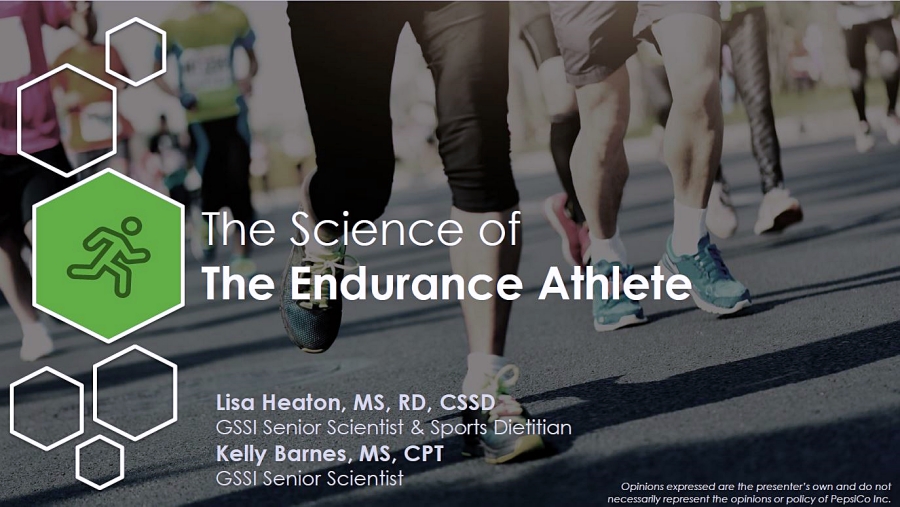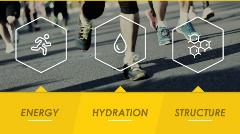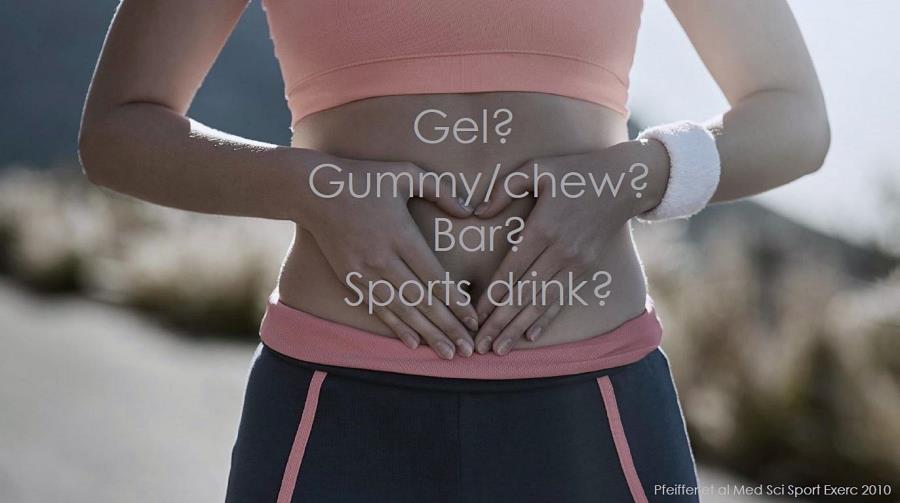Lisa Heaton, MS, RD, CSSD, and Kelly Barnes, MS |
Oct.
15, 2019

The Gatorade Sports Science Institute (GSSI) and ACSM recently hosted an industry-presented webinar with Lisa Heaton, MS, RD, CSSD, and Kelly Barnes, MS, entitled Fueling the Extra Mile: The Science of the Endurance Athlete.
Several questions were asked by attendees during the webinar and the answers pertaining to Exercise, Diets, and more are below.
Read the second half of the QnA here.

Key Points:
-
The sport nutrition needs for all athletes can be divided into 3 major categories: energy, hydration, and structure.
-
The body has an abundant storage of fats that can be used for fuel, but that is what the body turns to for the slower, less intense exercise.As exercise intensity increases, the body’s need for the fuel of carbohydrate increases; however this fuel storage is limited within the body.
-
The hydration needs of endurance athletes are unique, because as exercise intensity and duration increase, so do sweat losses — both fluid and electrolytes (specifically sodium, chloride, and potassium).To figure out sweat fluid losses, athletes should weigh themselves before and after exercise. Additional details on this testing and a calculator can be found at
https://www.gssiweb.org/toolbox/fluidLoss/calculator.
Q: I’ve heard our bodies carry 700g of carbs in the form of glucose/glycogen at any given time. Does that still hold true?
The average athlete can store glucose as glycogen in the liver (up to ~80 grams) and muscle (up to ~300-500 grams). But that storage volume and capacity rely on the athlete consuming carbohydrates over days and weeks to maximize the storage potential. The daily recommendation for endurance athletes to consume is 7-10 grams of carbohydrate per kilogram (pounds divided by 2.2) bodyweight per day. For ultra-endurance athletes, the total recommendation may be up to 12 g/kg depending upon their training schedule.
Q: Regarding intensity and time, is it more common to see more of the carbs being spared for long-duration exercise? I have noticed more low CHO diets in endurance athletes as a way to utilize fat for energy. Your take? Is there any data showing the positive or negative effects of "fasted cardio" that is so common today?
Athlete’s ability to “spare carbohydrate” utilization is very individualistic. The athlete can manipulate the highest exercise intensity that they can sustain where >50% of the fuel used comes from fatty acids by training at or just above that threshold or in a fasted state. However, even if they can hold onto primarily fat utilization at higher exercise intensities, they will still be utilizing carbohydrate and will need replacement to continue at that exercise intensity if the duration is long enough. Additionally, these strategies should be used strategically to ensure that there are still enough training sessions at high enough intensity to optimize performance and that the gut is well trained to tolerate the carbohydrate plan during competition. So, while this strategy may slightly reduce the amount of exogenous carbohydrate that the athlete needs to take in per hour, it does not eliminate the need for that carbohydrate intake during prolonged endurance exercise.

Q: How does adding a third carbohydrate source (maltodextrin) affect gastric absorption?
Maltodextrins are rapidly oxidized carbohydrates and can be absorbed at a rate of about 60g/h. If combined with glucose and fructose, the glucose and maltodextrin would be absorbed through the same transporter which can sustain a rate of about 60g/h total, so they wouldn’t want to take in much more than that. So glucose and maltodextrin can be used interchangeably or additively up to 60 g/h.
Q: With "train low," and an athlete deciding to use more than the usual CHO from training during a race, because the gut was not trained, will the increase in CHO intake get absorbed properly?
If an athlete chronically participates in a “train low” method, then their likelihood for stomach or GI upset is greater because the gut is not used to that volume. It is best to use “train low” strategically throughout the training vs at all training sessions.
Q: When we say exogenous CHO oxidation is it the same as CHO use in muscle, or it is oxidized elsewhere?
The body oxidizes carbohydrate during exercise to supply energy primarily to the working muscles and the brain.
Q: For clarification on the glucose + fructose studies: were the sources of glucose and fructose in the form of sucrose? Or were the fructose or glucose individual units?
There have been many different studies looking at different blends of glucose, sucrose, fructose, galactose, maltose and glucose polymers. The body can use a peak of 1.75g/min when 2.4 g/min of the glucose: fructose blend. However, a maltodextrin: fructose mix is much less sweet and can be used at a comparable quantity (1.5 g/min) when 1.8 g/min is consumed. Recommendations are based on a quantity per duration instead of per individuals body mass, since the size of the athlete doesn’t seem to affect absorption.
Q: What is “mouth rinse”? What is the physiological mechanism for the benefits of mouth rinse? Is it due to the incretin effect?
Athletes exercising for shorter durations can handle most forms of carbohydrate and could even benefit from rinsing their mouth with a carbohydrate solution. Without even swallowing this fluid, the taste transduction pathways in the mouth can send positive signals to the brain that can possibly counteract some of the negative signals from muscles, joints, and core temperature receptors. The specific pathway is unclear but does not seem to be related to incretins.
Q: Are the carb ratios for adult athletes vs. youth athletes going to be different? If so, would the carb requirements be higher or lower for youth athletes?
The amount and the type of carbohydrate recommendation depends on the athlete’s sport performance level, their goals, the duration of exercise, and their nutrition habits around the exercise occasion. Receiving ethical approval for research with minors is difficult, thus the research-based recommendations are limited. We suggested examining practical works by practitioners who work specifically with youth athletes, such as the text “Fueling Young Athletes” by Heather Mangieri, M.S., RDN, CSSD.
Q: What are examples of carbs that contain glucose and fructose? Might fruit juice be an example?
There are many sport products (like the Gatorade Endurance Formula) specifically formulated in this 2:1 glucose (or maltodextrin): fructose blend from which an athlete can choose. We recommend checking the label on any sports product to determine the types of sugars used. If choosing whole foods, fruits and fruit juices do provide a blend of glucose and fructose but the exact ratio will depend upon the specific fruit. The concentration of those sugars within the juice and fruit may be greater than can be tolerated during exercise. As with any fueling strategy, test out the use of any products in training.
Q: Do you have any suggestion for amateur athletes who travel abroad to compete when they will have a different sports drink than the one they're use to (because of a sponsor of the competition) and they didn't get the chance to try it before?
Athletes should practice their fueling strategy throughout their training. They should create and use the fuel and hydration plan for competition during some of their longer training sessions to make sure that it provides all the benefit with minimal side effects (i.e., sloshing stomach, bloating, stomach upset). They should plan to either practice with the products on course or plan to bring their own fuel for their competition. Their strategies should also include the timing to eat and drink the products they chose. Powdered forms of sports drinks may be easier to transport to foreign countries and can be reconstituted for use during the race.
Q: How to advise the athlete re: hydration real-time when conditions change during a long endurance event?
Athletes sweat profiles (or the amount of fluid and electrolytes they lose) will vary based on the temperature and humidity and the exercise intensity. Endurance athletes should make “sweat testing” a regular part of their training. To figure out sweat fluid losses, athletes should weigh themselves before and after exercise. Additional details on this testing and a calculator can be found at https://www.gssiweb.org/toolbox/fluidLoss/calculator. This way an athlete will understand how his/her fluid losses change as exercise duration/intensity/climate change and can make decision on adjustments to hydration plans “on the fly.”
Q: Does sodium loss differ statistically more or less in either cool/warm environment versus low/high intensity settings?
Sweat electrolyte losses vary the same as fluid losses and tend to follow the same trends with athletes losing more electrolytes as exercise intensity and climate increase. They are also very individual but are both statistically significant. Therefore, we recommend athletes who are exercising for more than 2 hours and those who have salt residue on their skin and clothing during even moderate-intensity exercise should plan to take additional electrolytes as part of their fueling plan.
Q: How does the athlete know that they are "optimally" hydrated? To know the starting body weight against which to judge that they have lost more than 2% of body weight to know that their performance can decline?
This would necessitate an athlete doing a “sweat test” and measuring their body mass before and after exercise. If the athlete replaces what they have lost through sweat, based upon body mass loss from the sweat test, and then attempt to keep urine color light like lemonade throughout the remainder of the day, they generally can assume that they are hydrated going into the next training session.
View More Popular Nutrition Content

Nutrition Intuition: Moving Away from Dieting Practices

Nutrition and the Exercise Professional’s Scope of Practice